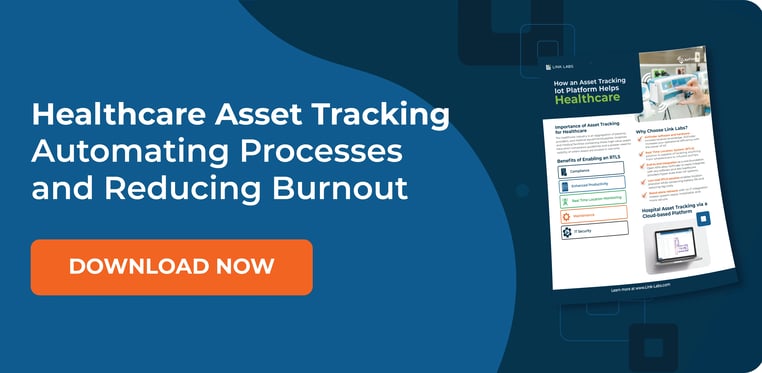A leading cause of nurses leaving their profession is due to burnout. A survey done last year by Nursing CE Central states that "Nursing burnout is a major contributor to the global nursing shortage." Nursing students are taught to expect burnout in the first two years of their professional careers. However, it seems like the problem doesn't stop anytime after that. After talking to a few nurses in our network, we gained real-life insight into how this problem affects the healthcare industry and nurses nationwide.
What Causes Burnout?
A common answer most nurses give is the shortage of nurses in their hospitals. It seems as if burnout and nursing shortages bounce off each other as one continually affects the other. Lyrah Devera, an RN from Virginia, explained that the current nurse-patient ratios have been unfavorable. Safe ratios are between 1:1-1:4, but right now, ratios can vary from 1:3-1:8 depending on which floor (Orthopedics, Med-Surg, ICU) of the hospital the nurse is working. Although this ratio has been affected for generations, the pandemic worsened it. In some hospitals, new grads are being trained for 1:8 ratios, which is a wake-up call when coming out of school.
Join the AirFinder Difference!
- Innovation. Organizations can be freed up to innovate and bring more impactful products and services to market.
- Profitability. Increased profitability provides new opportunities to innovate and improve valuation.
- Digital Transformation. Discover competitive advantages, new revenue opportunities, improved customer relationships and increased efficiency.
We can see below in the image taken from the study that multiple factors can cause a nurse to feel burnt out. Some can go hand in hand with emotional/physical exhaustion and high workload demands. As the image shows, more than half of the nurses in the study said these contribute to their burnout. Going back to staff shortages, not having enough nurses means more responsibilities fall on those in the hospital and as one can imagine, it can take a toll on them. In addition, inventory shortages on items such as Ativan injections are also occurring, which gives nurses fewer resources for providing the care they are expected to give.
.webp?width=850&name=unnamed%20(1).webp) The Effects of Burnout
The Effects of Burnout
The causes of burnout can lead to one major thing, adverse patient outcomes. Moses Aboy, an RN in the MICU for his hospital, mentioned, “When there’s burnout, negative patient outcomes increase. Not seeing good outcomes can affect a nurse emotionally, physically, and mentally.” Patient outcomes can affect nurses tremendously as their goal is to obtain favorable outcomes and make sure that their patients can walk away satisfied. When nurses are physically and emotionally exhausted their efficiency can take a hit and that plays a big part when they are providing care.
The effects of nurse burnout trickle into patients and their families being frustrated with the care they receive from their nurses. This can play a significant role in a nurse wanting to leave their position for one that is less taxing or leaving the profession entirely. As we can see, the results of burnout affect both essential parties in a hospital and organizations need to take the necessary steps to help prevent it from occurring.
What are Some Ways to Prevent Nurse Burnout?
Nurse burnout is a problem that will not go away with a snap of a finger. The different situations that play a part in burnout are simply a part of the profession. However, there can be some ways where burnout can be prevented.
Resource Allocation
Due to the staff shortage, hospitals need to know where their staff is needed. Joshua Tami-Ing, an RN in New Mexico, shared that “it is important for hospitals to actively put nurses from the “float pool” (Nurses that are scheduled to be sent wherever they are needed) where they should be and not where they are constantly sent to.” The redistribution of nurses can help hospitals with efficiency since they are not getting sent to their normal locations but instead to an area that needs them most.
Personnel Safety
A way to keep nurses working in the hospital is by ensuring they are protected when violent situations arise. It is not rare for nurses to deal with violent patients due to the patient experiencing frustration, panic, etc. Nurses must be protected, and having a system like a badge tag can allow them to signal the others in the hospital when they are in distress.
Equipment Tracking
A lot of frustration and wasted time can be taken away when nurses can find the necessary equipment. Cannot find lists get filled with lots of lost equipment. With an RTLS, hospitals can automate finding high-value equipment in their buildings. Automation eliminates the time wasted looking for an item from floor to floor and gives them ease of mind knowing the equipment they need can be found in real-time.
 Reduce Nurse Burnout With Asset Tracking
Reduce Nurse Burnout With Asset Tracking
Nurses have some of the most extensive responsibilities in the professional world. It can be tough to fulfill these responsibilities as they battle things mentally and physically. It is crucial for hospitals to come up with ways to prevent burnout and one way it can be done is through asset tracking. With Link Labs AirFinder, hospitals can be assisted through staff and equipment tracking, allowing for proper resource allocation, employee safety, and process efficiency.
If you are interested in learning more about asset tracking solutions and how they can benefit your hospital talk to one of our experts and request a demo.




